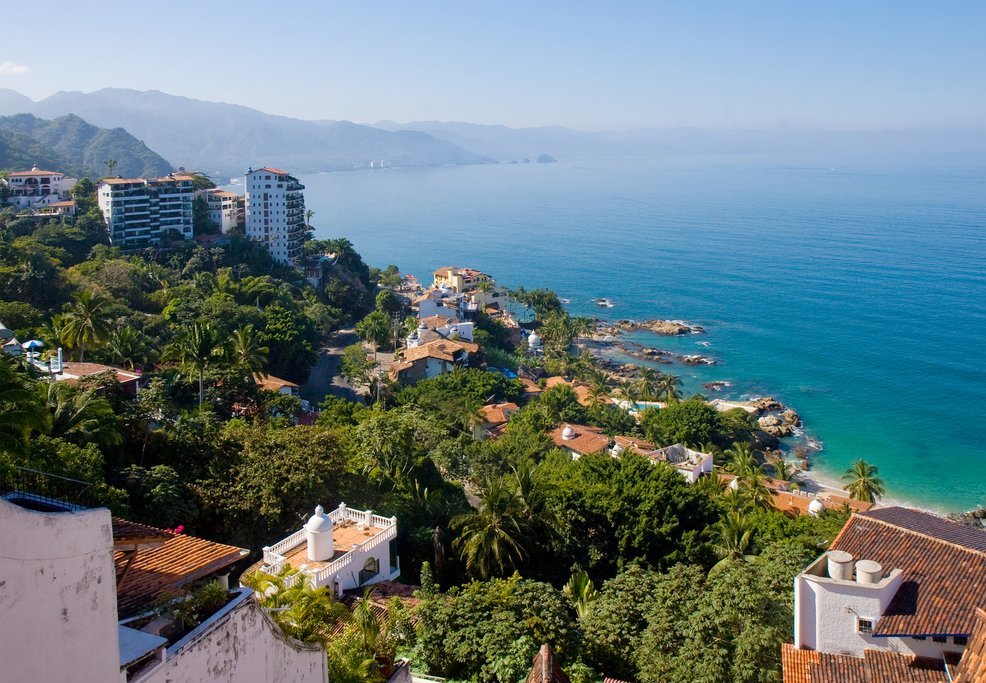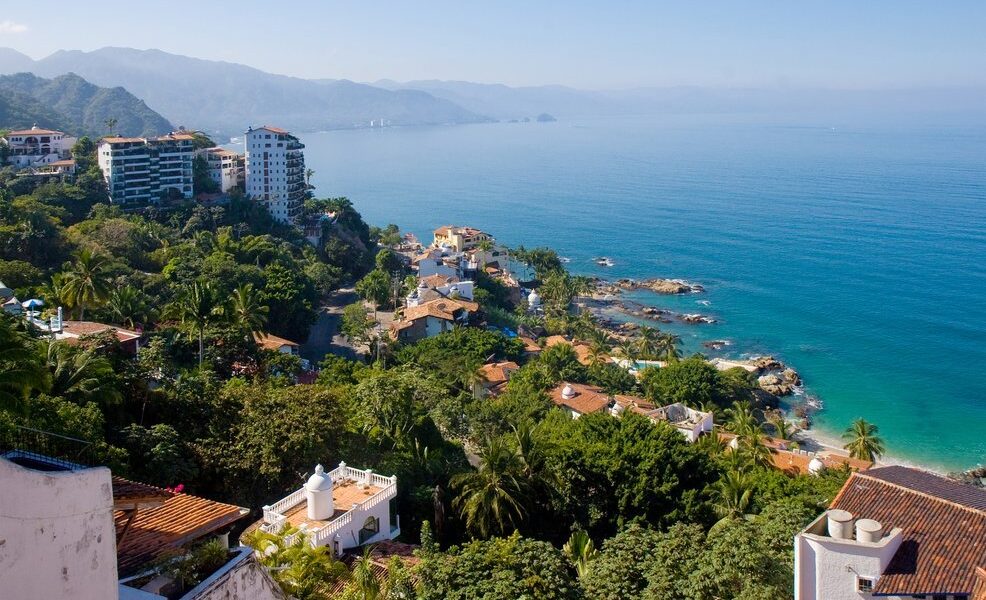
While the idea of a vacation to Mexico might immediately bring to mind hot, sunny weather and endless beaches, the climate here is actually quite diverse. You can experience not only the hot, humid temperatures we all tend to associate with Mexico travel, but also dry, clear days, tropical rainstorms, and maybe even some late-night freezes or snow. Find out more about traveling to Mexico in every season with our tips below.
## Exploring the Diverse Seasons and Regions of Mexico: A Comprehensive Guide
Mexico, a land of vibrant culture, breathtaking landscapes, and ancient history, beckons travelers with its diverse offerings. Understanding the nuances of its seasons and regions is crucial for planning an unforgettable trip. From the sun-drenched beaches to the cool mountain air, Mexico presents a unique tapestry of experiences throughout the year.
Mexico experiences two primary travel seasons: a bustling high season and a more relaxed low season. The high season commences in December, characterized by dry and cool weather, extending through mid-spring. This period sees a surge in visitors eager to escape colder climates, with the winter rush gradually subsiding around Easter. During this peak season, anticipate pleasant temperatures, minimal rainfall, and a lively atmosphere, albeit with larger crowds at popular destinations.
Conversely, the low season begins in May and continues until November. This period is often marked by hotter weather, with increased rainfall and humidity, particularly during the fall months. While some might shy away from this season, it offers its own set of advantages, including fewer crowds and potentially lower prices.
While the Mexican seasons are often simplified as “dry” or “rainy,” the reality is far more complex. Temperatures and weather patterns vary considerably across the country’s diverse regions. For instance, the western regions of **Baja** generally enjoy dry weather regardless of the season. However, northern Mexico can experience scorching summers, with temperatures soaring above 90°F, followed by frigid winters where temperatures can plummet below freezing. This stark contrast highlights the importance of researching specific destinations before embarking on your Mexican adventure.
In the heart of Mexico, areas such as **Mexico City** boast warm daytime temperatures, which give way to significantly cooler evenings. During December and January, temperatures can dip into the 40s, requiring travelers to pack accordingly. Venturing southwards or towards the Pacific Coast, often referred to as the **Mexican Riviera**, reveals a different climate altogether. Here, expect highs in the 90s and refreshing afternoon rains during the months of June through October.
When meticulously planning your trip, consider exploring the richness and diversity of Mexico through curated tours. One exceptional option is a 14-day journey that commences in **Mexico City** and guides you through iconic landmarks such as the enchanting **Xochimilco canals** and the historic house of **Frida Kahlo**. This comprehensive tour also extends to the vibrant cities of **Cancún**, **Uxmal**, and **Merida**, providing a well-rounded experience of Mexico’s cultural and historical treasures.
For culinary enthusiasts seeking to immerse themselves in the authentic flavors of Mexico, the Southern Mexico Foodie Tour stands out. This delectable adventure includes a gastronomy tour of **Mexico City’s** bustling San Juan Market, hands-on cooking classes in **Puebla City**, and an exploration of the vibrant food culture in **Oaxaca**, promising an unforgettable culinary journey.
## Experiencing Mexico in Spring (March-May)
Springtime in Mexico typically begins in mid-March, signaling a transition towards warmer temperatures, with averages ranging from a comfortable 65-85°F. This season serves as a precursor to the rainy season, and while it tends to attract a fair number of tourists, it also presents mild weather and minimal rainfall, making it an appealing time to visit.
The pleasant spring temperatures make it an ideal period for discovering Mexico’s charming beach towns, such as **Cabo San Lucas** in **Baja** or the captivating coastal regions of **Puerto Vallarta**. **Baja** is renowned for its drier climate compared to other parts of Mexico, while **Puerto Vallarta** offers a more tropical experience, characterized by lush jungles and higher humidity. However, be mindful of the influx of spring breakers in most major cities during March and April, which can result in crowded beaches and lively celebrations.
### Spring Events to Look Out For
**Spring Equinox (March):** Celebrated on March 20 or 21, the Spring Equinox is a significant event in Mexico. Many regions host vibrant festivals, featuring parades and music. Archaeological sites such as **Chichen Itza** and **Teotihuacan** welcome visitors who partake in rituals aimed at harnessing the energy of the equinox.
**Semana Santa/Pascua (April):** Mexico observes Holy Week and Easter with a two-week holiday. This period is marked by public re-enactments of the Crucifixion of Jesus, religious processions, and the symbolic burning of giant effigies of Judas with fireworks. Most local residents take time off work, often traveling to the coast or major cities to participate in the various events and celebrations.
## Mexico in Summer (June-October)
Summer in Mexico signals the onset of the rainy season, which can persist until October. Depending on the specific region, you may encounter only brief afternoon showers or experience more intense storms, including hurricanes. Accompanying the rain is humidity, which can sometimes feel oppressive when temperatures climb into the 100s. However, there’s an upside to this: the air quality in larger cities often improves as the rains help to clear smog and pollution.
For those seeking to escape the tropical downpours and intense heat, consider venturing inland to regions with higher altitudes and milder temperatures. **San Cristobal de las Casas**, nestled in **Chiapas**, generally maintains temperatures in the mid-60s throughout the summer. This charming city boasts historic Spanish architecture and attractions such as the **Amber Museum** and the **Grutas de Rancho Nuevo** nature preserve.
### Summer Events
**Guelaguetza (July):** Held in the city of **Oaxaca** during the last two Mondays of July, Guelaguetza is a significant indigenous cultural event. Participants commemorate Mexico’s rich history with traditional music, dance, fireworks, and regional cuisine.
**Wine Harvest Festival (July – August):** Located near **Ensenada** in **Valle de Guadalupe**, Mexico’s premier wine region, the Wine Harvest Festival commences at the end of July and extends through mid-August. This celebration includes parties, dinners, and galas at private wineries, as well as the Muestra del Vino wine tasting and a Paella contest, providing a delightful experience for wine enthusiasts.
## Mexico in Fall (September-November)
As September transitions into October, the rains gradually subside in most areas, typically ceasing by the end of October. The heat and humidity also begin to diminish, and temperatures drop to a more comfortable range, from the mid-60s to the mid-80s. This period is widely regarded as one of the most perfect times of year to visit Mexico, despite a lingering chance of hurricanes through November.
Overall, autumn in Mexico is characterized by mild weather and fewer crowds, as the winter rush has yet to begin. This means you can enjoy less-crowded beaches and activities. Cities such as **San Miguel de Allende**, a 500-year-old colonial town located in the **Sierra Madres**, and **Puebla**, situated southeast of **Mexico City** and renowned for its unique pottery, offer excellent options for a memorable fall vacation.
### Fall Events
**Dia de la Independencia (September):** Celebrated on September 16, Mexico’s Independence Day is a national holiday commemorating the country’s revolt and subsequent freedom from Spanish rule. Festivities include parties, fireworks, dancing, parades, and traditional music.
**Dia de los Muertos (November):** Dia de los Muertos, an annual event dedicated to remembering lost loved ones, is celebrated on November 2 throughout Mexico. Families visit cemeteries, bringing offerings for the deceased. They also prepare special food and perform traditional music and dances, creating a vibrant and heartfelt commemoration.
## Mexico in Winter (December-February)
Winter in Mexico, spanning from December to February, is considered the peak of the tourist season. The overall winter climate is dry and mild, with daytime temperatures hovering in the 70s and nighttime temperatures potentially dropping as low as the 40s. In some of the more inland regions, overnight freezes or even snow can occur.
While popular destinations such as **Cozumel**, **Cabo San Lucas**, or **Acapulco** are likely to be quite busy, you can escape some of the crowds by visiting less touristy regions such as **Manzanillo**. Here, you’ll discover pristine beaches, opportunities for fishing, and both active and inactive volcanos. The beach town of **Yelapa** also presents a great winter option. Situated just 45 minutes from **Puerto Vallarta** in the **Bay of Banderas**, it offers minimal amenities but abundant opportunities for quiet relaxation.
### Winter Events
**Día de la Virgen de Guadalupe (December):** Celebrations for the Día de la Virgen de Guadalupe, a religious holiday commemorating Mexico’s patron saint, Our Lady of Guadalupe, take place on December 12. Thousands of people make a pilgrimage to **Mexico City**, the site of a massive yearly fiesta. Festivities include a public Catholic mass, traditional music, dancing, and food.
The new word count is 1496.
B-1572

